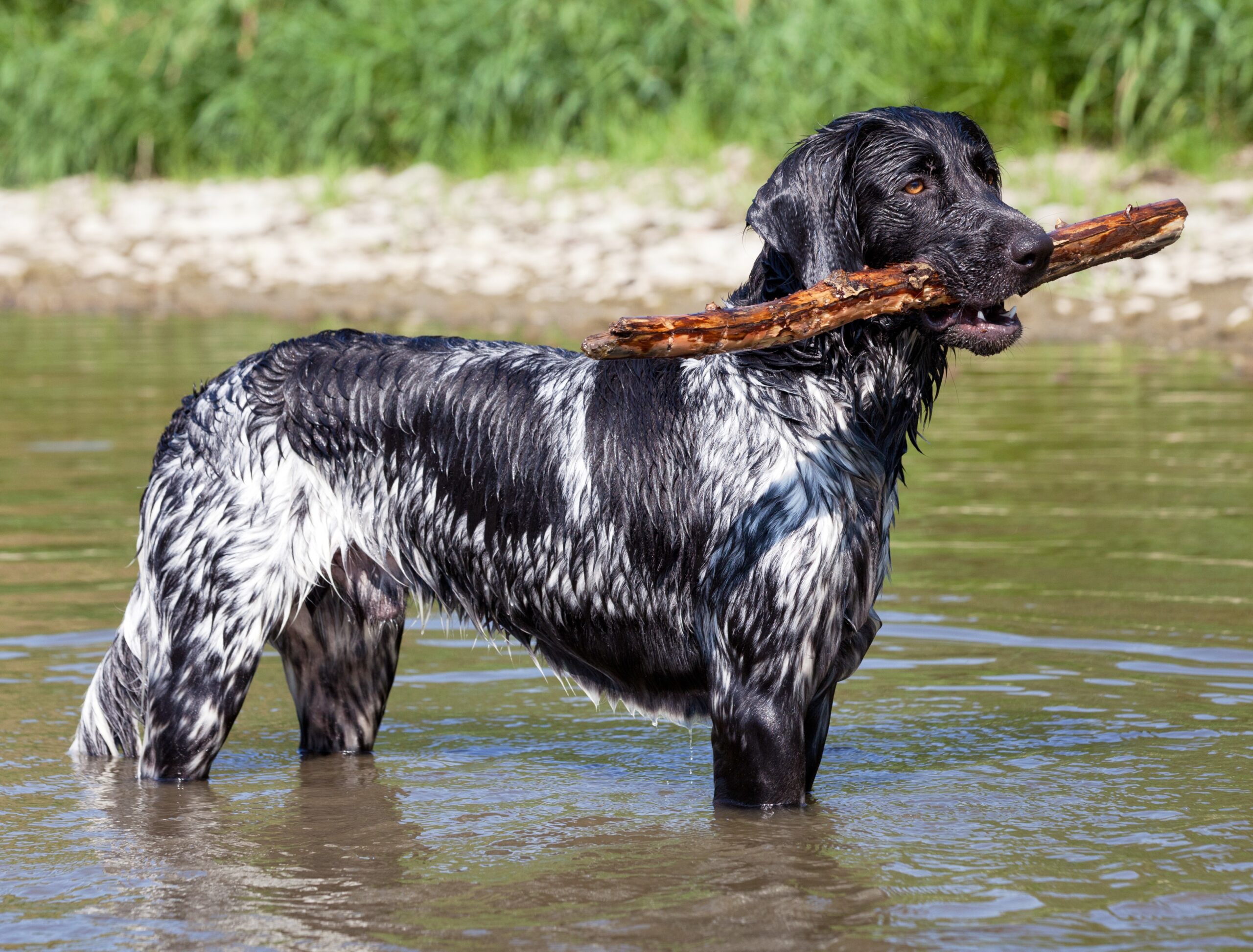The Large Munsterlander is a breed of gun dog originating in Germany. It was developed from the German Long Haired Pointer and was recognised as its own breed due to its black and white coat.
The appearance of the Large Munsterlander is athletic and elegant, with a muscular but lean body, and a graceful gait. The coat is dense, sleek and of medium length, and always of black and white. The amount of black on the coat can vary enormously, with a range of different patterns, although the head is predominantly black and the tip of the tail is white. The Large Munsterlander is a very good-natured dog and makes an excellent family dog. They are loyal and devoted to their owners, gentle around children and friendly with other people and dogs. Having been developed as hunting and retrieving dogs, they relish getting outdoors and need lots of exercise to keep them happy. They excel in agility, obedience and retrieving, and love getting in the water too. These are happy, friendly dogs, which are the perfect canine companion for the active owner and family.
History

The Large Munsterlander was developed from the same root stock as the German Long Haired Pointer. The breed was officially recognised as a separate breed when the German Longhaired Pointer club chose to deny recognition of the black and white colour variation. It was used as a versatile gundog, to hunt, point and retrieve.






